Claudia and I recently returned from two weeks in the far northwest corner of California among the redwoods. And we loved it there, as always. It’s one of my favorite places on the planet.
I love forests in general, including the hardwood forests in the eastern U.S., the conifer forests of Yosemite, aspens in the western mountains, and the moss-draped, old-growth forests of the Olympic Peninsula. They’re all great.
But the redwoods are extra-special to me. Among these giant trees, I feel like I’ve been transported back in time. It’s easy to imagine dinosaurs roaming forests like these – because they did. During the Cretaceous period, the height of the dinosaur’s reign, some 145 to 66 million years ago, ancestors of redwoods were abundant, covering large tracts of the northern and southern hemispheres. If redwood forests seem ancient and primeval to me, it’s because they really are ancient. That earthy smell of redwoods and ferns I notice when I enter a redwood forest was probably familiar to many dinosaurs.
Aside from that connection to the past, entering any forest can be a soothing, calming experience. The Japanese originated “forest bathing,” a mindful practice of immersing oneself in nature, particularly forests, to reduce stress, improve mood, and boost well-being.
Any meditative practice can have those kinds of benefits, but with forests there may actually be a chemical component as well. Many plants give off phytoncides, chemical compounds which help protect them from bacteria, microscopic fungi, and protozoa. Conifer trees like pines, cedars, and redwoods release large amounts of phytoncides each day, essentially sterilizing the atmosphere around them.
So when you enter a conifer forest (hardwoods don’t release as many phytoncides), you’re breathing chemically-altered air. And studies have shown that the main phytoncides released by conifers, alpha-pinene and beta-pinene, have positive effects on humans. They’ve been linked to increased natural-killer cell activity, potentially boosting the immune system. Inhaling these compounds may also lower blood pressure, heart rate, and cortisol levels.
Whether the effects are chemical or psychological, a walk through a redwood forest always calms me and soothes me. They’re peaceful places. Even when I meet other people on the trail, that seems like just a small disturbance, a slight ripple in a vast sea of ancient, timeless serenity.
As a photographer, it’s always a challenge to capture what I’m feeling in these forests. Fog certainly helps add to the sense of primeval mystery. Sun breaking through fog is even better. We were lucky to find sun-breaking-through-fog conditions lasting for hours last Monday morning, as a section of one of my favorite trails sat near the top of a fog bank. And I also pursued the edge of fog on other occasions, sometimes making long hikes to reach a foggy grove, or waiting and hoping that the fog would move into the forest late in the afternoon.
Of course sunbeams are always striking, but when I saw sun breaking through fog I also made it a point to turn around and see what the sun was hitting. Many of my favorite redwood photos show sunlight cutting through fog to strike a redwood trunk, or a patch of ferns, or a rhododendron. Those photos often have a darker, more primeval mood, while sunbeams tend to be brighter and more uplifting. But it’s all good, as those are all moods I feel in redwood forests.
I hope you enjoy this portfolio of images from our trip to the redwoods. It was hard to leave, and I look forward to going back. I don’t seem to ever get enough of these forests.
— Michael Frye
Related Posts: Character and Mood on the Northern California Coast; There’s Fog, and Then There’s Fog
Michael Frye is a professional photographer specializing in landscapes and nature. He lives near Yosemite National Park in California, but travels extensively to photograph natural landscapes in the American West and throughout the world.
Michael uses light, weather, and design to make photographs that capture the mood of the landscape, and convey the beauty, power, and mystery of nature. His work has received numerous awards, including the North American Nature Photography Association’s 2023 award for Fine Art in Nature Photography. Mich
ael’s photographs have appeared in publications around the world, and he’s the author and/or principal photographer of several books, including Digital Landscape Photography: In the Footsteps of Ansel Adams and the Great Masters, and The Photographer’s Guide to Yosemite.
Michael loves to share his knowledge of photography through articles, books, workshops, online courses, and his blog. He’s taught over 200 workshops focused on landscape photography, night photography, digital image processing, and printing.

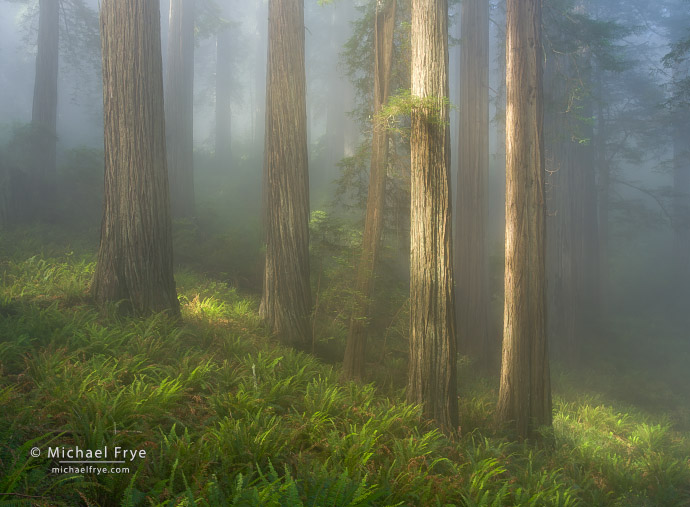
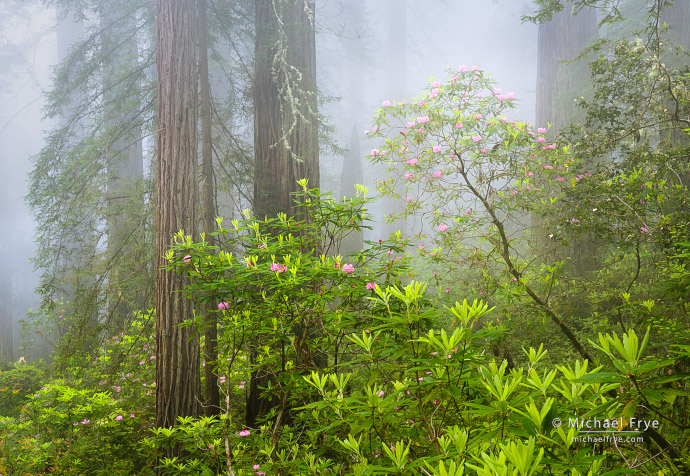
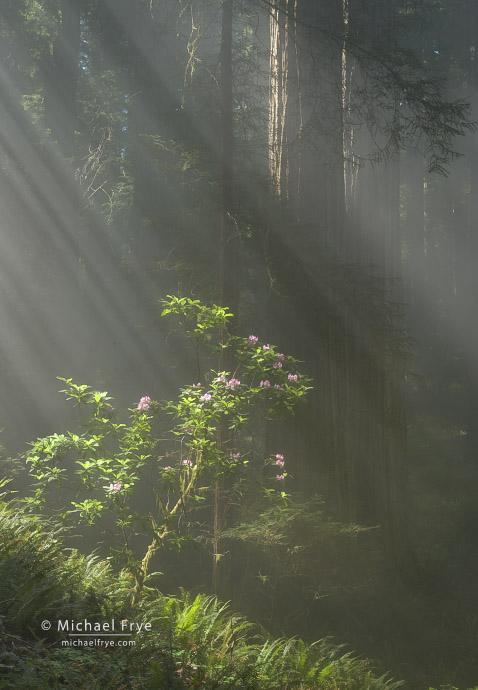
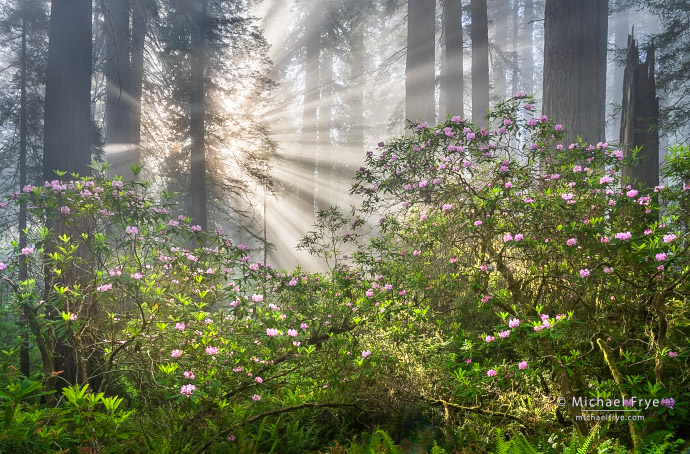
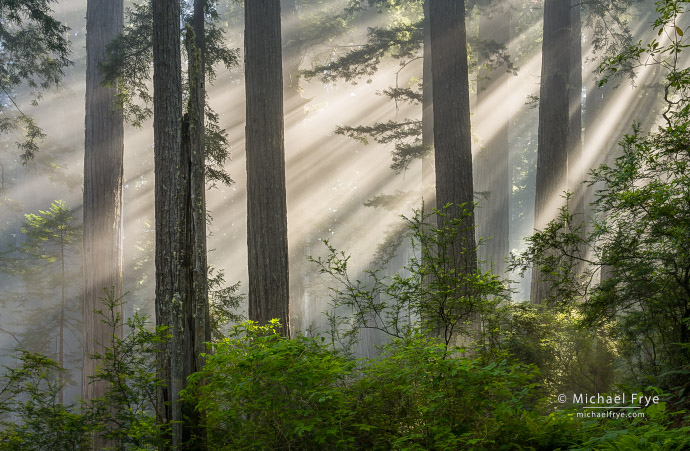
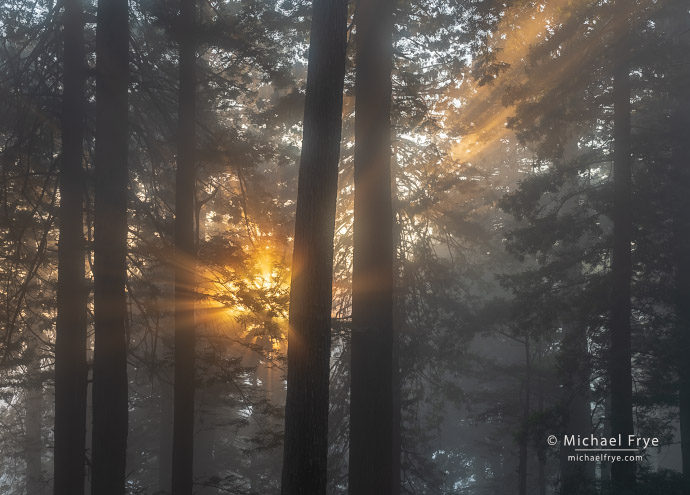
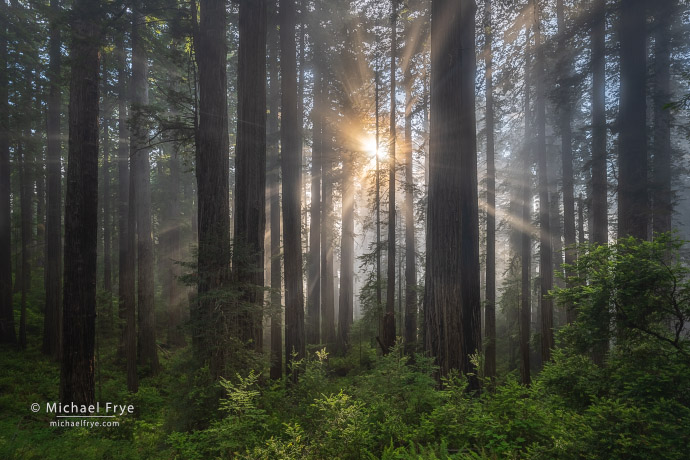
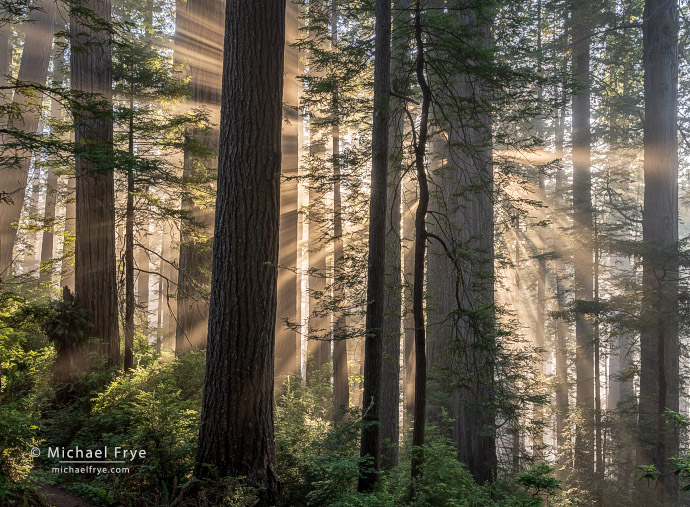
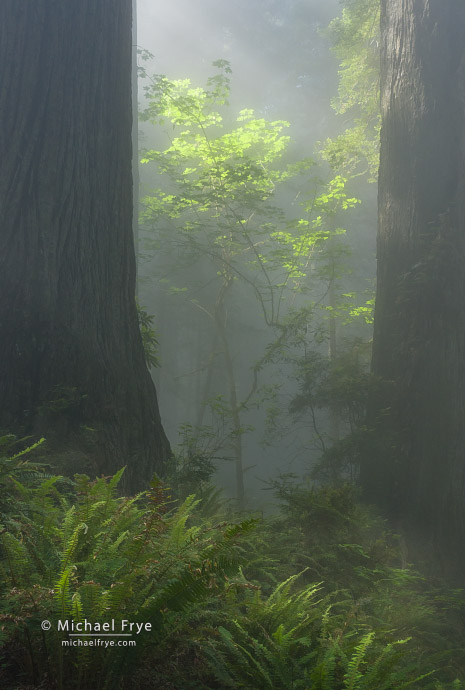
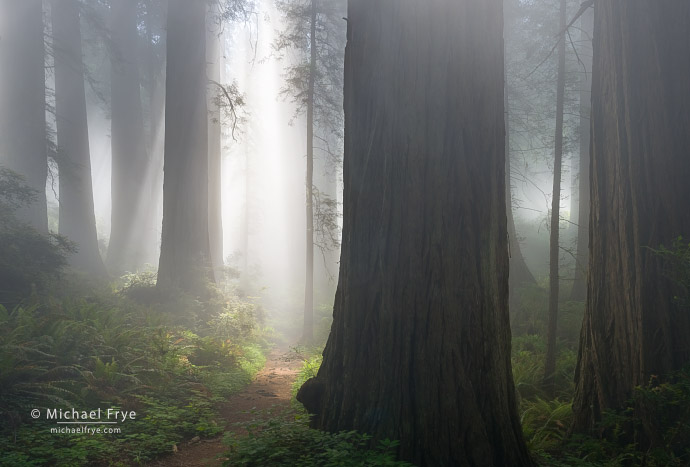
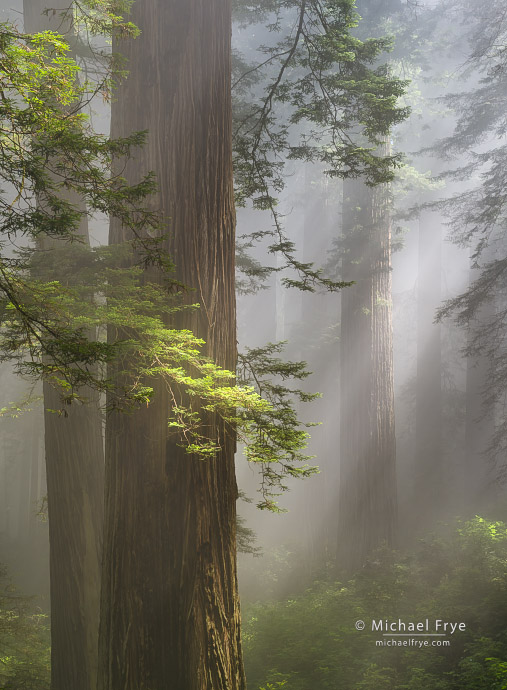
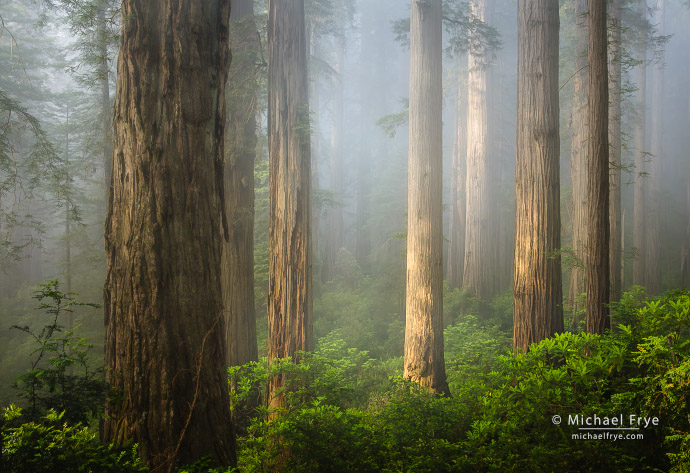
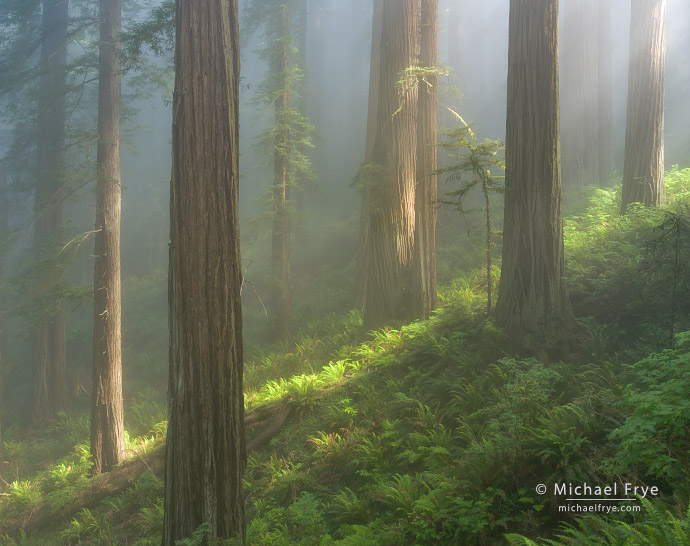






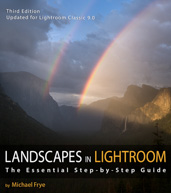
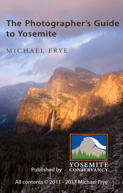
Great story and photos to go with it Michael. You were fortunate to have such great conditions to photograph, what with the fog and the light beams shining through it. The last couple of times I’ve been there I didn’t come close to getting that look.
Thanks Ted! Yes, it takes a little luck to get the right conditions, plus some persistence, weather acumen, willingness and ability to hike, and knowledge of the area.
It was a pleasure meeting you Michael.
Your work from here has inspired me for a long time. Thanks for bringing the light with you last Monday! I finally got that “Fryelight” I’ve been looking for!
Great meeting you as well Joe! I’m glad you got to see and photograph the sun breaking through fog, and it lasted a long time.
Beautiful photos and amazing light. You get the feeling that these pictures are coming to life!!!
Thanks so much Matt! I’m curious… what device and browser are you using to look at this post? In my recent posts the images are HDR with gain maps, so you might be seeing the full HDR rendering, which to me seems more lifelike and three-dimensional, but you’ll only see that with certain browsers and devices.
Great to see you at the trail last week, Michael! Beautiful and inspiring images as always! Best, George
Great to see you as well George, and thanks!
I love all of these beautiful images, with a dreamlike feeling you’ve been able to capture
Thanks so much Jeremy! The redwoods seem dreamlike to me, maybe from this world, but from another time. And under certain lighting conditions that dreamlike quality comes out.
When I first looked at the images of the Redwood Forest, I thought it was smoke coming from the Canadian Fire but it was fog. Just superb and so beautiful. I would love to come there someday. Great article Michael!
Thanks Randy! Luckily fog is much more common than smoke in these coastal temperate rainforests, though fires aren’t unheard of.
It has been years since I visited the Redwoods of No. California. Thanks for the wonderful portfolio that brought this extraordinary place to life for me. Beautiful images. Very much appreciated.
Thank you Mark – I’m glad you enjoyed these, and I hope you get back to the redwoods soon.
Michael, these are beautiful. When I saw, in the comments, that you had included an HDR gain map, I looked at the images again using Google Chrome on my Macbook Pro. I think the HDR makes a real impact on the sunbeam images. Particularly the 4th and 7th. I wonder what display HDR will mean for photography? Images really have to be separate things for displays and prints. An online class on display HDR would be great. Except Zoom doesn’t show it!
Thank you Will! I think many people are trying to figure out what HDR displays will mean for photography. And yes, screen display and print may become two separate realms. I’d like to do a class on processing images for HDR displays, but as you point out, you can’t do it over Zoom (or any other online meeting platform that I know of), and even getting an accurate screen recording is convoluted. I’m working on it.
Michael, your redwood fine art photographs are some of my absolute favorites! The way you capture the interplay of light, fog, and these ancient giants is truly inspiring—such depth, mood, and timeless beauty in every frame. Your vision and teaching continue to push me forward, and I’ll keep signing up for your tutorials. It’s been 6 years since we moved to Europe and I miss Yosemite and those redwoods! Keep it up! 🙌
Thanks so much John! I’m glad you like these images so much, and I appreciate your taking the time to let me know.